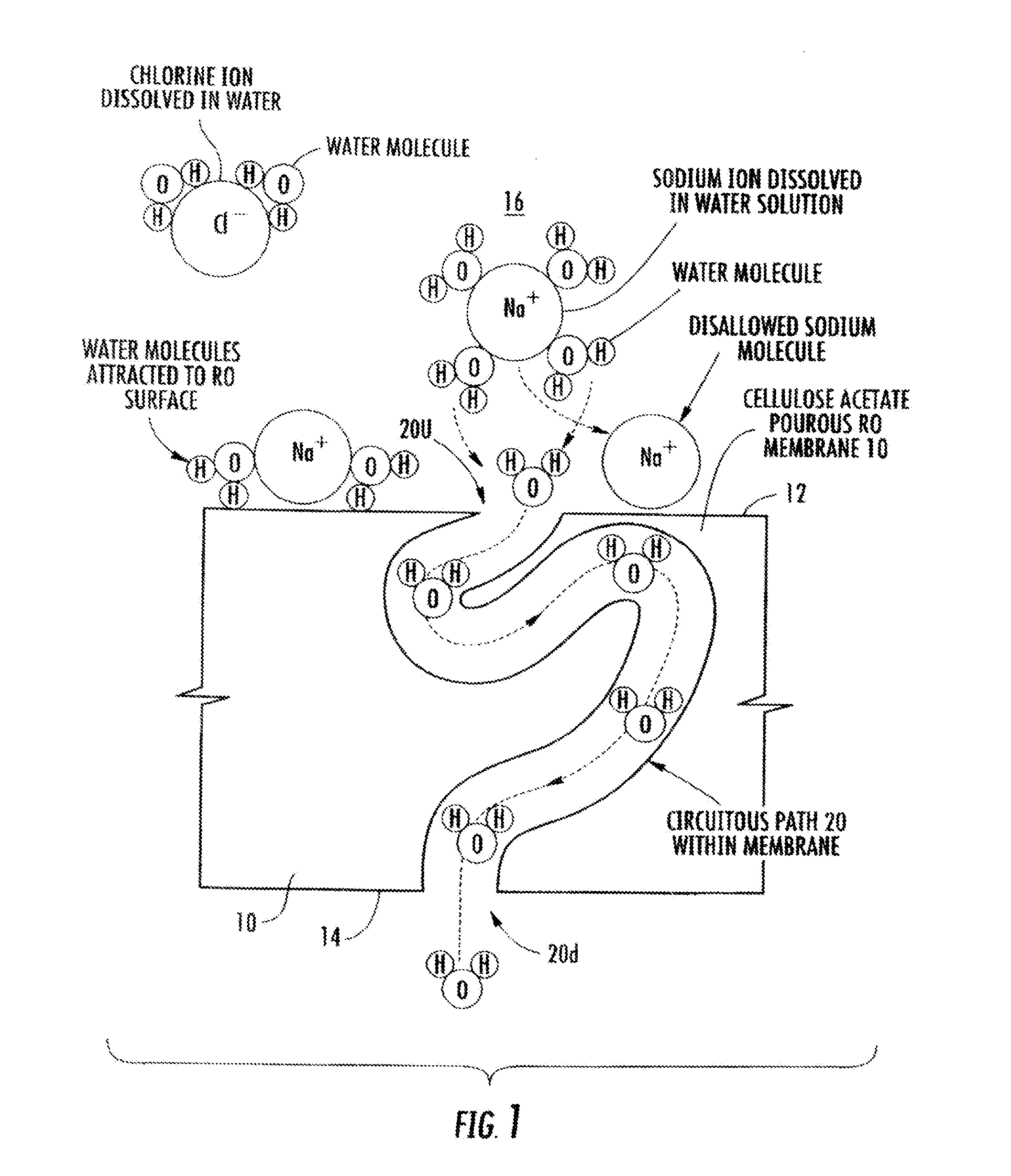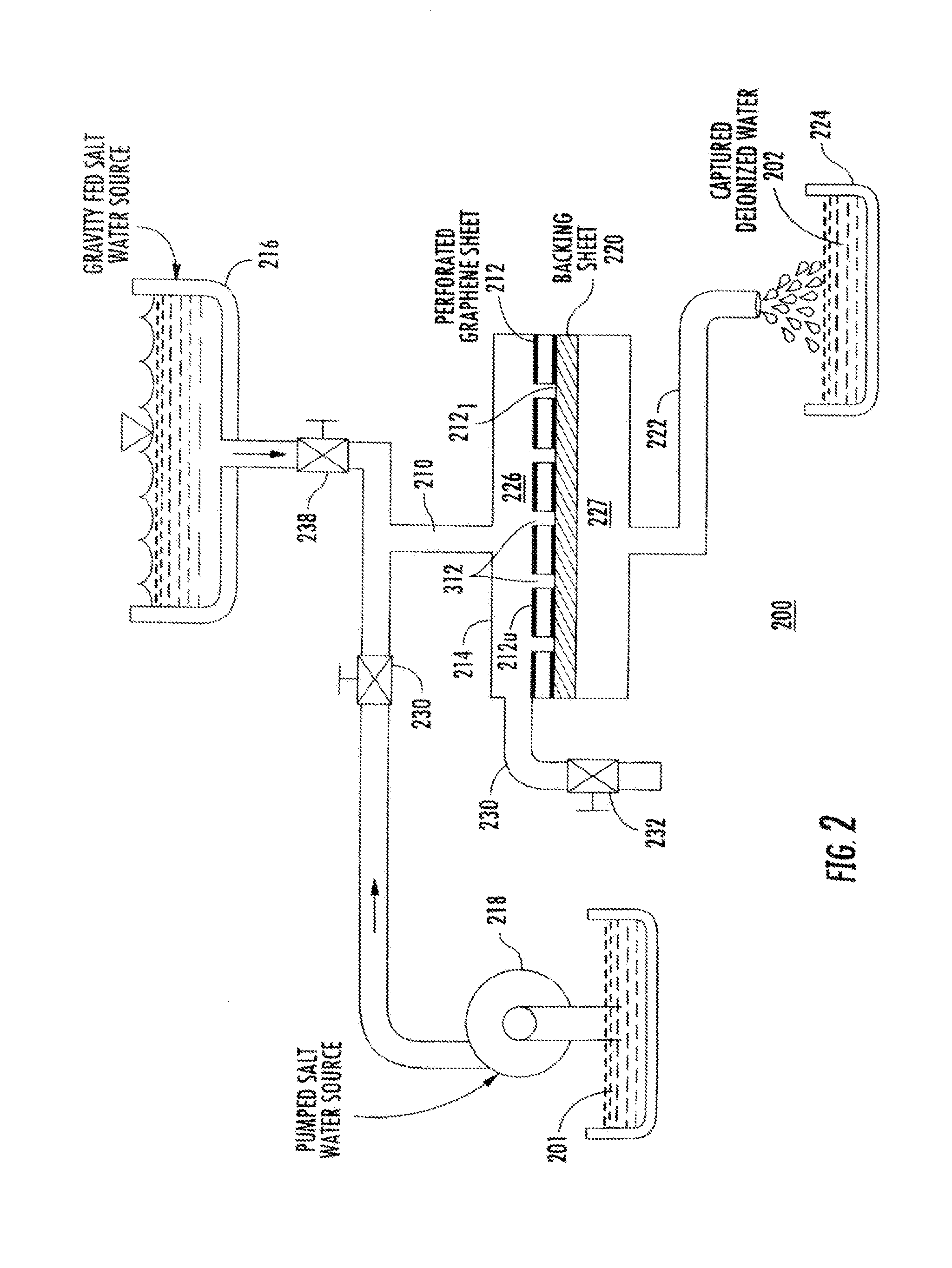Perforated graphene deionization or desalination
- Summary
- Abstract
- Description
- Claims
- Application Information
AI Technical Summary
Benefits of technology
Problems solved by technology
Method used
Image
Examples
Embodiment Construction
[0026]FIG. 2 is a notional representation of a basic desalination, desalinization or deionization apparatus 200 according to an exemplary embodiment or aspect of the disclosure. In FIG. 2, a channel 210 conveys ion-laden water to a filter membrane 212 mounted in a supporting chamber 214. The ion-laden water may be, for example, seawater or brackish water. In one exemplary embodiment, the filter membrane 212 can be wound into a spiral in known manner. Flow impetus or pressure of the ion-laden water flowing through channel 210 of FIG. 2 can be provided either by gravity from a tank 216 or from a pump 218. Valves 236 and 238 allow selection of the source of ion-laden water. In apparatus or arrangement 200, filter membrane 212 is a perforated graphene sheet. Graphene is a single-atomic-layer-thick layer of carbon atoms, bound together to define a sheet 310, as illustrated in FIG. 3. The thickness of a single graphene sheet is approximately 0.2 to 0.3 nanometers (nm). Multiple graphene s...
PUM
| Property | Measurement | Unit |
|---|---|---|
| Nanoscale particle size | aaaaa | aaaaa |
| Nanoscale particle size | aaaaa | aaaaa |
| Nanoscale particle size | aaaaa | aaaaa |
Abstract
Description
Claims
Application Information
 Login to View More
Login to View More - Generate Ideas
- Intellectual Property
- Life Sciences
- Materials
- Tech Scout
- Unparalleled Data Quality
- Higher Quality Content
- 60% Fewer Hallucinations
Browse by: Latest US Patents, China's latest patents, Technical Efficacy Thesaurus, Application Domain, Technology Topic, Popular Technical Reports.
© 2025 PatSnap. All rights reserved.Legal|Privacy policy|Modern Slavery Act Transparency Statement|Sitemap|About US| Contact US: help@patsnap.com



